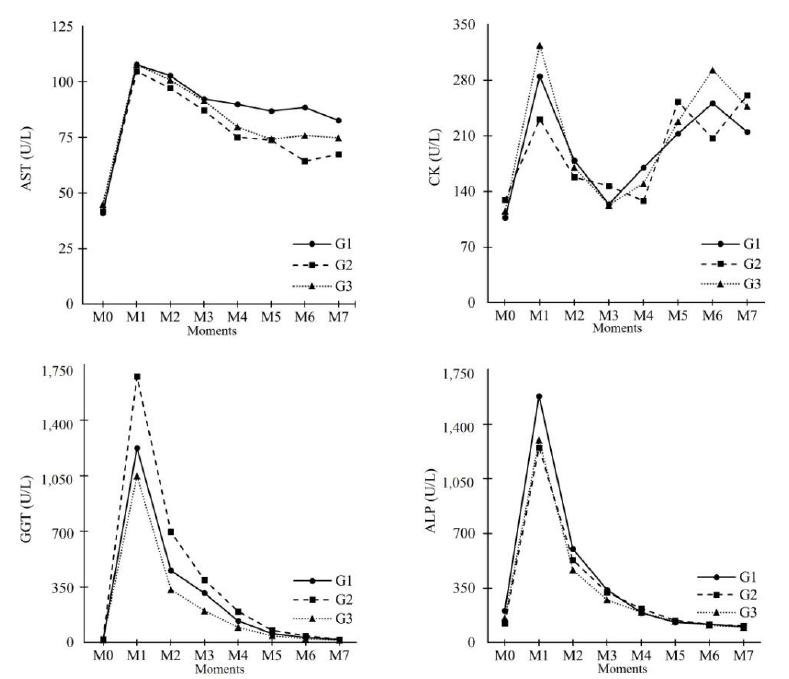ABSTRACT
Serum blood samples from 50 Murrah buffalo calves were examined in this study. The animals were allocated into three groups according to the number of parturitions of their mothers: G1 (n= 15) calves from primiparous buffaloes, G2 (n= 19) calves from buffaloes with two to four parturitions, and G3 (n= 16) calves from buffaloes with five or more parturitions. Blood samples were taken at birth, before colostrum ingestion, at 24h, 48h, and 72h after birth, and at 7, 14, 21, and 30 days after birth for determination of levels of gammaglutamyl transferase (GGT), alkaline phosphatase (ALP), aspartate aminotransferase (AST), creatine kinase, total protein, albumin, globulins (including immunoglobulin G), iron, total calcium, ionized calcium, phosphorus, sodium, and potassium. The age of the calves was found to influence all of the biochemical parameters, with the exception of ionized calcium and potassium in the calves in groups G1 and G3. The calving order was found to influence AST, GGT, total protein, albumin, and globulins, including IgG. The high serum ALP activity in the first two days after birth indicates that measurement of the levels of this enzyme may be used as an indirect method of assessing passive immunity transfer.
Keywords:
Bubalus bubalis; newborn; number of parturitions; murrah; passive immunity transfer (PIT)



